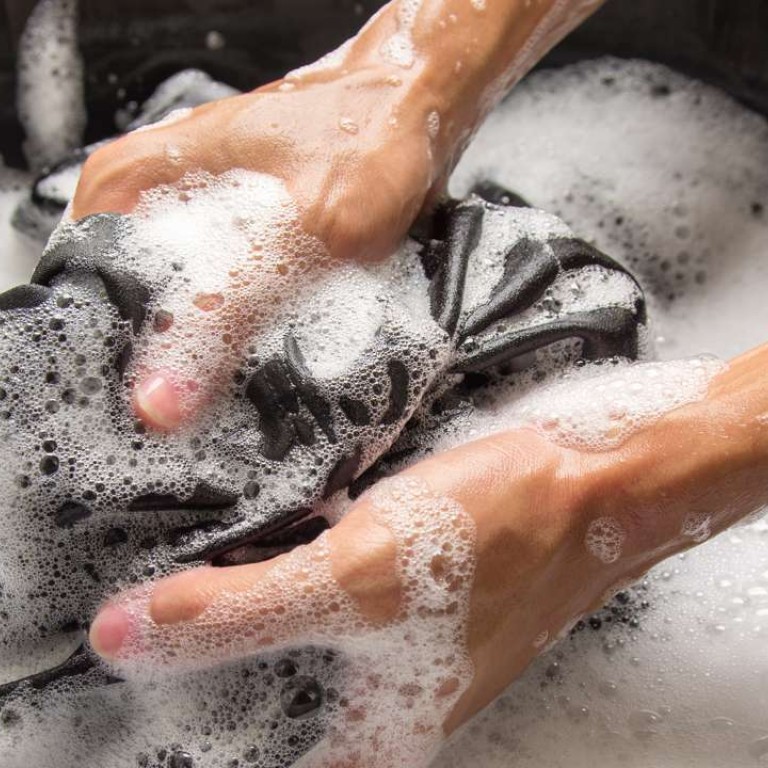
Eight ways to stop your workout clothes stinking, and why they smell so bad
Experts offer tips on how to prevent the awful odour that comes with repeated exercising
If there’s one thing that really kills me during a workout, it’s not the burpees or hill sprints, but the stench emanating from my sportswear.
Technical fabrics, which most sportswear brands use, do a great job of wicking moisture and keeping the body cool. However, the synthetic materials – such as Lycra, Tactel, Supplex, Dri-Fit, Coolmax and Climacool – are stink magnets too. After a few wears, my exercise clothing tend to get progressively smellier, no matter how much detergent I use.
The long-chain fatty acids the armpits secrete are too big to be volatile, Callewaert explains. The stink happens when sweat meets bacteria. Bacteria break down the long-chain fatty acids and hormones and sulfur compounds, resulting in odoriferous molecules.
Fabric softener will ruin your sportswear instantly and keep it smelly
In one of his studies published in 2014 in the journal Applied and Environmental Microbiology, he and co-investigators collected T-shirts from 26 healthy people following an intensive, hour-long bicycle spinning session, and incubated the shirts for 28 hours before inspecting them. The taxonomy of the bacteria on the shirts and in the armpits was also examined.
On the clothes, the main bacteria culprits are micrococci, says Callewaert. “They are known for their enzymatic potential to transform long-chain fatty acids, hormones, and amino acids into smaller – volatile – compounds, which have a typical malodour.”
Staphylococci, which inhabit both armpit skin and adjacent textiles (the latter with much less diversity), create a normal body odour (not unpleasant smelling). Corynebacteria are the main causes of bad odours in the armpits, but they fail to grow on textiles, he says.

Peter Hopper, a veteran Hong Kong runner, says he hasn’t found any long-term solution to smelly sportswear. “Three to four months seems to be about the average life of fabric if you use it a lot,” he says. “Chuck it and buy a new one.”
To find a better solution, I sought advice from Hong Kong’s running community.
1. Choose natural fabrics over synthetic ones
As Callewaert’s research shows, bacteria tend to grow less well on natural fabrics than synthetic ones.
Technical fabrics that can repel moisture also means they repel water in the washing machine too, making dirt and body oils difficult to remove.
For sportswear, natural alternatives include cotton, bamboo or merino wool. The downside is these fabrics tend to absorb more moisture than synthetic fabrics, resulting in sweatier, heavier clothing as your workout progresses.
2. Try sportswear with anti-stink technology
There are many different kinds of anti-odour fabrics on the market these days, but arguably the leading technology is silver-infused yarn, such as that found in Lululemon apparel. Silver is said to be antibacterial and antimicrobial. A report published in March this year in the journal Environmental Science & Technology found that silver nanoparticles and coatings wash off of commercially available garments in the laundry at negligible levels, while at the same time even low concentrations of silver on clothing kept microbes at bay.
Other anti-stink technologies include fabric infused with crushed volcanic rock, material treated with crushed crab and shrimp shells, and fabric that contains activated carbon made from coconut shells.
3. Wash your sportswear immediately
You may not have a big enough load for the washing machine, but don’t let your sportswear stew in its stench. Rinsing your workout clothes as soon as possible after your workout – even during your post-exercise shower – will help.
4. Pre-soak the clothing
Avid hiker Phillip Forsyth recommends soaking garments for a couple of hours in a bucket of water containing baking soda and vinegar, followed by a normal wash.
Alternatively, soak your clothes in laundry sanitiser from the supermarket, says Nicola Chong, who uses brands like Swashes or Dettol.
5. Use in-wash scent boosters.
Trail runner Debbie Bailey says Bounce Burst works for her. “Just add some to your washing. If it really stinks, soak it,” she says.
6. Try sports-specific laundry detergent

7. Never use softener
“Fabric softener will ruin your sportswear instantly and keep it smelly,” says trail runner Martijn Doekes. Fabric softeners make clothes feel softer by coating the fibres with a thin layer of chemicals. This can prevent detergent from reaching dirt in technical fabrics, and remove any special coatings the fabric may have. It could also reduce the absorbability and moisture-wicking properties.

8. Dry clothing in the sun
Ultraviolet rays work almost like a bleach, destroying germs and giving off a fresh smell in your clothing. It’s more economical and environmentally-friendly that using a dryer. [email protected]

